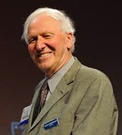 Prof. John VanderkooyIn 2010 Prof. John Vanderkooy presented an AES paper offering analytical proof and compelling evidence that the acoustic center for low frequencies resides in front of the loudspeaker at a distance of approximately two-thirds of the baffle radius.
Prof. John VanderkooyIn 2010 Prof. John Vanderkooy presented an AES paper offering analytical proof and compelling evidence that the acoustic center for low frequencies resides in front of the loudspeaker at a distance of approximately two-thirds of the baffle radius.
This phenomenon could account for the so-called “fudge” factor (figure 1) encountered when setting the delay for inverted-stack gradient (CSA) arrays where the required delay always exceeds the depth of the enclosure.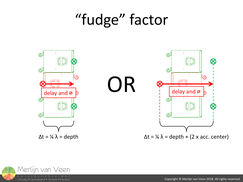 figure 1
figure 1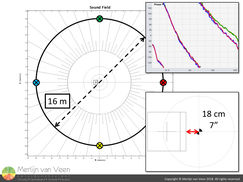 figure 2
figure 2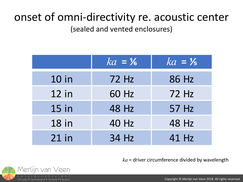 figure 3
figure 3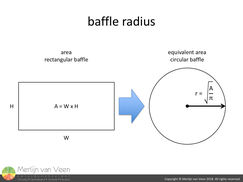 figure 4Using non-linear regression, I’ve condensed Vanderkooy’s BEM results into equations that predict the position of the acoustic center for a single sealed or vented enclosure, based on its physical dimensions and driver diameter, within ±10% accuracy.
figure 4Using non-linear regression, I’ve condensed Vanderkooy’s BEM results into equations that predict the position of the acoustic center for a single sealed or vented enclosure, based on its physical dimensions and driver diameter, within ±10% accuracy.
Most of the time, the predicted values are in very good agreement with my own observations. A subwoofer placed in a polar circle, at equal time-of-flight in all directions and therefor equal distance, optically won’t end up in the middle of the circle (figure 2).
For frequencies that are low enough where ka << 1 (ka is the driver circumference divided by wavelength), spherical waves emanate from the acoustic center rendering sealed and vented enclosures virtually omni-directional (figure 3).
Click here to download the calculator.
Clarification:
Baffle radius is simply the radius of a circle with an equal area as the typically rectangular area of the loudspeaker's baffle (figure 4).
